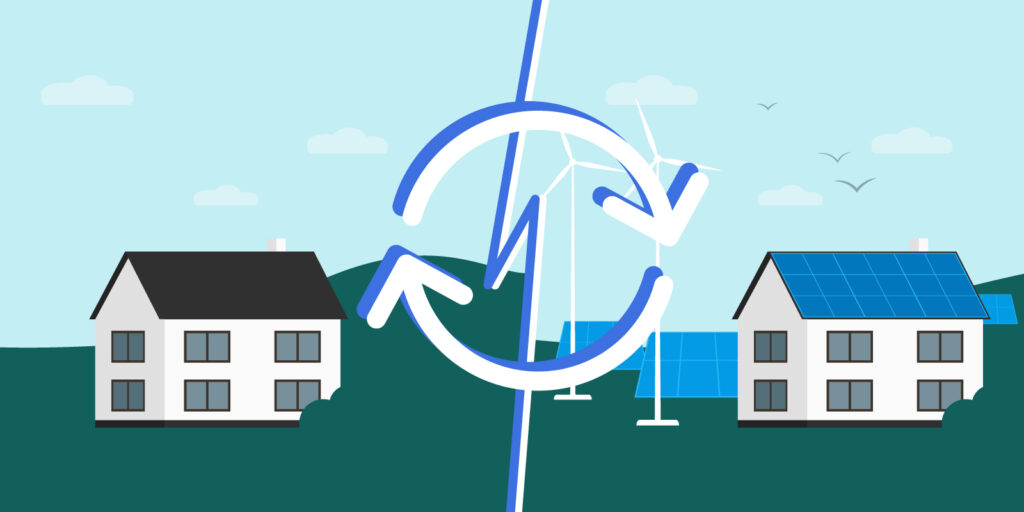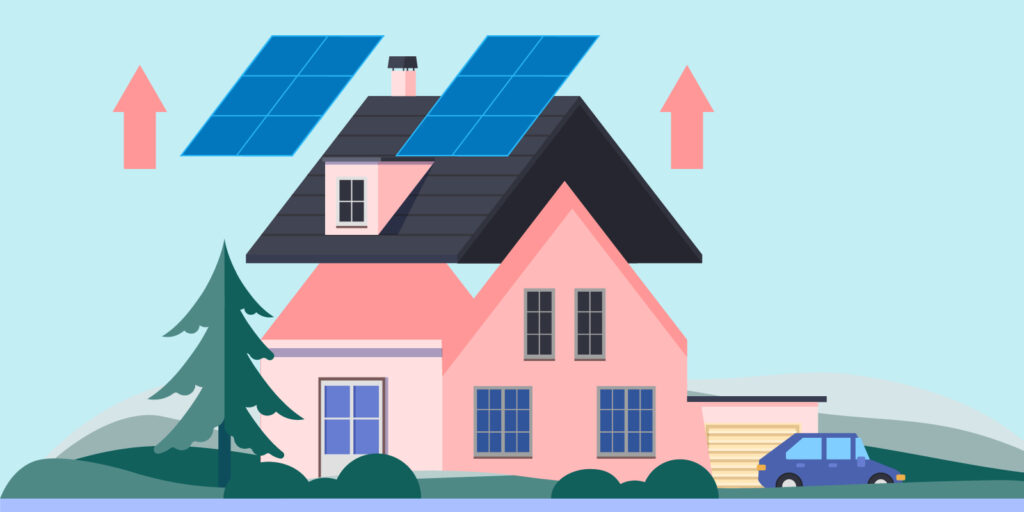Installing a new roof is a significant decision for most homeowners. Putting up new solar is less of a choice since the benefits of lower energy costs make an excellent long-term investment. Should you install a new roof for solar?
That’s not an easy question to answer, and whether it’s right for you depends on a few variables. Either way, putting in either a new roof or solar power is a decently big investment of time and money, and it’s a good idea to know what you’re doing before you commit to one, the other or both options at once.
Should You Install a New Roof for Solar?
The perceived wisdom for many homeowners is that you might as well install a new roof for solar since you’re getting work done anyway, and doing both at once can save a small amount of trouble. If it were easy and cheap to replace your roof, that would be enough, but getting a total roof replacement for your house is a really big operation that can take the better part of a week and cost upwards of $6,000-$12,000, depending on the size of the roof. New solar can cost $15,000-$25,000 before tax credits and other incentives. If you’re trying to do both simultaneously, installing a new roof for solar might not be in the budget while you’re paying for solar.
If you can swing both, however, there can be a lot of advantages to putting up a new roof for solar. Depending on the installer you go with, you might be able to contract with a single company to handle both, which simplifies scheduling and financing. You might also have an easier time getting a home equity loan to cover the work if your bank prefers a single, simplified loan-to-work plan to improve your home. Both systems might also be covered by the same warranty, which might make a world of difference in a few years, in case anything ever goes wrong.
Benefits of Installing Solar
For much of the country, installing new solar almost always makes sense. In areas with high solar potential, also known as a lot of sunshine, your system might pay for itself with lower energy bill costs in just a few years.
Even in parts of the country with marginal solar potential, where your panels will probably break even financially, you can still reduce your carbon footprint by drawing less energy from a coal- or gas-fired grid.
Roof Age Versus Warranties

Whether or not it’s a good idea to install a new roof for solar projects comes down to lifespan. The typical new roof comes with a 30-year warranty, while solar systems most often have a 25-year repair and replacement plan. On average, you can generally count on your roof and solar system to last about that long. Even after your warranties have run their course, you don’t necessarily have to rush out and replace your roof or solar panels. With proper care, a roof that’s past its warranty could still last for up to 50 years. Some high-end roofs, such as slate and some tiles, even come with a lifetime warranty.
Solar panels also come with warranties, but because they’re working systems, you have to pay more attention to their rated lifespan. Solar panels lose efficiency as they age, so over time, they just produce less and less electricity until it’s time to replace them. Tier-3 solar systems tend to degrade faster than tier-1 systems, which are the top of the line. On average, a low-end solar system degrades at a rate of 0.8% yearly, while a tier-1 system loses about 0.3% of its efficiency yearly. Your decision to install new solar, or to replace an underperforming system you already have, depends in part on the system you’ve invested in.
When Should You Install Solar on an Existing Roof?
Making the decision about putting on a new roof for solar basically comes down to timing and the systems you currently have or are planning to install. If you’re basing your choice on the warranties for your roof and solar system, the most important factor is how much time you likely have left on each of them before replacing them. Doing them both at the same time has the potential to align your warranties and potentially simplify the eventual replacement later on.
Aligning the Cycles
Given the warranties for both a new roof and for solar, it’s tempting to go all-in for both at the same time. If you get a new roof for solar installation, your roof’s 30-year warranty dovetails nicely with the 25-year warranty on the solar system.
This can also work out if you install a 25-year solar system on a 50-year roof with half its life left or if you put in a shorter-lived tier-3 solar system on a roof with just 10-15 years left to run. Before you make the call and commit to a solar installation, research how much life your roof likely has left in it, how long different types of solar are likely to last for you and what your target date is for replacing both.
Considerations for Installing a New Roof
Here are a few considerations to think about before rushing into the decision to install a new roof.
How’s Your Current Roof Doing?
Is your roof getting close to the end already? How long do you think it has left before you need a replacement? More than that, can your roof now support a typical solar system? If your current roof isn’t up to it, it might be best just to replace it.
Have You Had Solar Before?
Have you or the previous owner of the house had solar at some time in the past? If your roof is still serviceable and there are already support holes and structures you can reuse to install new solar, you might want to hold off on getting the new roof. Tearing out the existing structure before you have to might just be a waste of money and time.
Do You Expect to Sell Soon?
Don’t forget the resale value for your house of both solar power and a new roof. If you’re thinking about installing solar for a decade or so and then selling the house when the kids leave for college in 10 years, it could be worth it to invest in a double replacement. Houses with relatively new roofs and a solar array that’s only halfway through its service life tend to sell for more than homes with just an old roof or with an older roof and low-tier solar. If you’re considering selling, getting a new roof for solar could make perfect sense.
You might also be interested in: The Top 12 Reasons To Switch To Solar Energy Today




